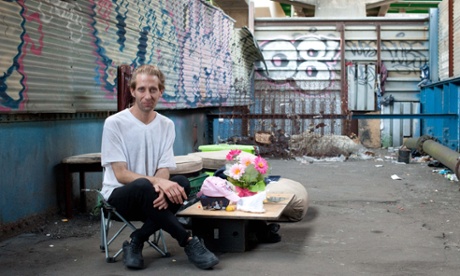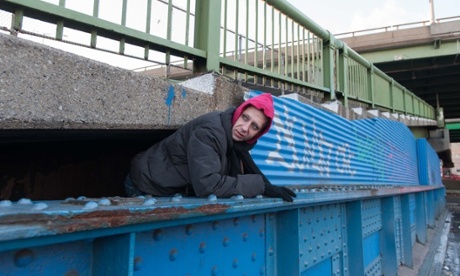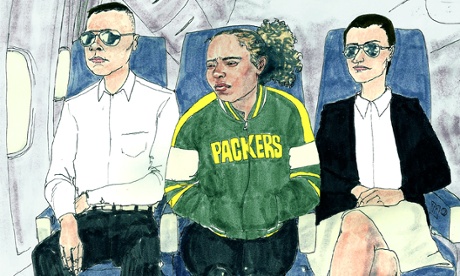Ithaca, New York, is home to lot of academics. Education is the bedrock of Ithaca’s economy, with two major universities operating in the town of 30,000. It has kept the unemployment rate low and made Ithaca wealthy for the region.
What Ithaca is also home to is a lot of drug users. Like much of the country, the city is suffering from a heroin epidemic. Overdoses from heroin across the region have quadrupled in the past 10 years, mirroring data across the country. You can easily buy heroin from men selling it in the streets or in bars. There are needles clustered in empty lots and there are corners where women sell sex for drugs.
The two facts, taken together, lend themselves to progressive drug policies. Like many university towns, Ithaca is politically liberal, offering an array of programs focused on drug prevention, as well as treatment and harm reduction. This includes rehabs, health clinics, a well-maintained homeless shelter, daily free meals, and a clean needle program.
Still, heroin use in Ithaca keeps growing, users keep getting thrown in jail, and people keep dying from overdoses.
Frustrated, Mayor Svante Myrick recently announced the Ithaca Plan, a more progressive proposal that addresses illegal drugs as a public health problem rather than a crime, and focuses on treatment rather than incarceration.
Central to the plan is a program to funnel people caught for certain petty offences, including low-level drug possession and sales, directly to social services by passing the usual sequence of arrests, courts, jails. It’s a program started in Seattle that has so far been successful.
Spurred by three deaths from overdoses in one week last year, it also calls for a greater effort at harm reduction by proposing a supervised injection facility – or bluntly, a place where users can shoot up in front of a nurse and not be arrested. These facilities exist in other countries and have decreased deaths from overdoses, but are not legal in the US.
Harm reduction is always controversial and easily attacked by those who see addiction as a weakness. In the 1980s, the policy of giving out free needles needed to overcome intense opposition, despite the rapid increase in HIV. This part of the plan is facing similar pushback, including from Ithaca’s police chief, John Barber, who when asked, wrote to me: “I firmly support the exploration of a Law Enforcement Assisted Diversion (Lead) program for Ithaca, but I am wary of supervised injection sites. As police chief, I took an oath to uphold the law and will not condone the illegal use of heroin, supervised or not.”
For Myrick, the plan, all of it – including a safe injection site – is not just about good public policy, but it is also personal. The mayor is the child of an addict who kept going on and off drugs and eventually abandoned the family.
Like many children of addicts, he talks about his past with a studied detachment, not because it isn’t emotional for him, but probably because it has once been too emotional for him. When I ask him where his father is now, he answers quizzically, as if reminding himself, “I don’t know. I mean, could be in rehab, or could be out. I don’t know.”
His embrace of harm reduction, including allowing a government-sponsored shooting gallery, is a result of that past, shaping how he views addiction. “When you’re a child that close to addiction, you can’t be unrealistic about it. I mean, when your father loses his job and you ask why? Drugs. When your father passes on buying food and you ask why? Drugs. That isn’t rational, not even to a five-year-old, and so you learn something isn’t right. Drugs isn’t a crime, it is a disease.”
Once you see addiction as something more than a failing, it demands harm reduction, but also raises the question, what can we do to stop the epidemic? For Myrick and many others, it means trying to address the root causes that are social and economic: “What we see is lot of people locked out of the economic mainstream. We see mental illness, anxiety, boredom, alienation and isolation. Drugs are a coping mechanism for that, and we need to find other ways to help people cope.”
Jodi and John are a lot like many of those using heroin in Ithaca, and across the country. They are young, white and poor, and without any college education. Jodi is 19, and grew up in a small town 40 miles from Ithaca. She came to Ithaca because there was nothing for her in the town of 5,000: “Ithaca is where everything is – restaurants, bars, live music – and you don’t need a car.”
She was quickly surrounded by heroin. “I resisted at first, but then I did a friend a favor, and they paid me in drugs, and well, I liked the feeling. Then I got a habit, and I needed more to stop being sick.” She eventually was shooting 12 bags a day, earning money by panhandling. Now she is three weeks clean, but she admits she will probably start again.
She met John, 27, soon after arriving. He also came to Ithaca from a nearby small town. “There was nothing going on in my town, no jobs, no excitement, and Ithaca had both.” He started using as a substitute for a prescribed pain medication. “It was cheaper to buy heroin on the streets than try and get a new prescription.”
Boredom was also as a reason for him using, although he mentions family history as explanation: “My dad was a trucker, was gone all the time, really had no father figure I guess. Without any real reason to stay around back home I came here, and everyone uses here except the college kids.”
Neither of Jodi or John’s families had much money, bouncing between poverty and lower middle class, depending on how the economy was doing.
There are college kids using heroin, and some using a lot, but Ithaca is largely divided into a college scene and a local scene, and the heroin is mostly part of the local scene. Like John and Jodi, many of locals came to Ithaca for the social life around the college – the night life, the concerts, the excitement – but don’t have the background to attend one of the schools, get a job, or fit in with the students. Jodi explained: “The college kids are cool, sometimes they smoke weed with us, but nobody really hangs with them. They’re kind of snobby.”
How to address the root causes of people like Jodi and John isn’t directly clear. Neither claims to have suffered undue trauma as a child; rather they, like many others I have spoken to across the country, talk about boredom and feeling left behind.
Still addiction isn’t always about the large traumas, the violent child abuse I see in the Bronx and other places. Poverty, and the hardships it brings, is itself a trauma. As is feeling left behind. As more emphasis is based on success through education, people who struggle with school are being left behind. It has created a society where we sort, economically and socially, by the number of degrees someone has.
Moving between the two worlds is possible, in both directions.
James, 25, was supposed to go to college. His dad was a professor and James had it good. “I went to an all-white upper class school and I was straight as an arrow, but my friends wanted me to show them the ‘ghetto’. They figured since I was black I would know. So, I tried to show them around and ended up getting caught up in the bad side of things. Then my father died, and the people I used drugs with replaced my family, and my other friends turned from me.”
The mayor also moved between the two worlds, but in the other direction. He grew up poor in a very small town, and came to Ithaca to attend Cornell. When I asked him if he was running from drugs, he laughed: “Not to the degree I should have. I never abstained until late in college, when I started getting lots of responsibilities, and smoking and drinking just got in the way of them.”
That is perhaps another reason his plan emphasizes root causes, rather than incrimination. He knows, from his own life, that where you start out matters but is a hurdle that can be overcome with the right policies.
Targeting root causes of addiction can only go so far. No matter how “fair” our society is, there will be people who will use drugs. For these people, harm reduction is necessary to save lives.
On my last day in Ithaca I ate at a small restaurant filled with college students and professors. As I left I noticed three people standing in an empty lot, arguing. Adjacent to the lot was a house where people shot up, and across the street was a nonprofit that offered free needles.
They had been walking to the house to shoot up but had stopped to fight. Michele , 38, was crying, claiming one of the men had just slugged her. She had come to Ithaca 15 years before and has been using heroin almost all of her life. “I started when I was young, real young.”
They were fighting over who would get the extra bag of heroin; they heard a rumor someone had recently overdosed on the batch and were excited to try it. It is one of the warped realities of addiction that a batch of heroin linked to an overdose is sought after, because it means it is “really good shit for the money”.
Without the supervised injection site, Michele and her friends will get their free needles on one side of the street, walk across the lot and shoot up in an abandoned house, or a locked store bathroom on the other side of the street.
And if the heroin is “really good shit”, too good, they will overdose. If they are lucky, one of their friends will have some Narcan to spray in their nose to save them.
If they are not lucky, they will die.











